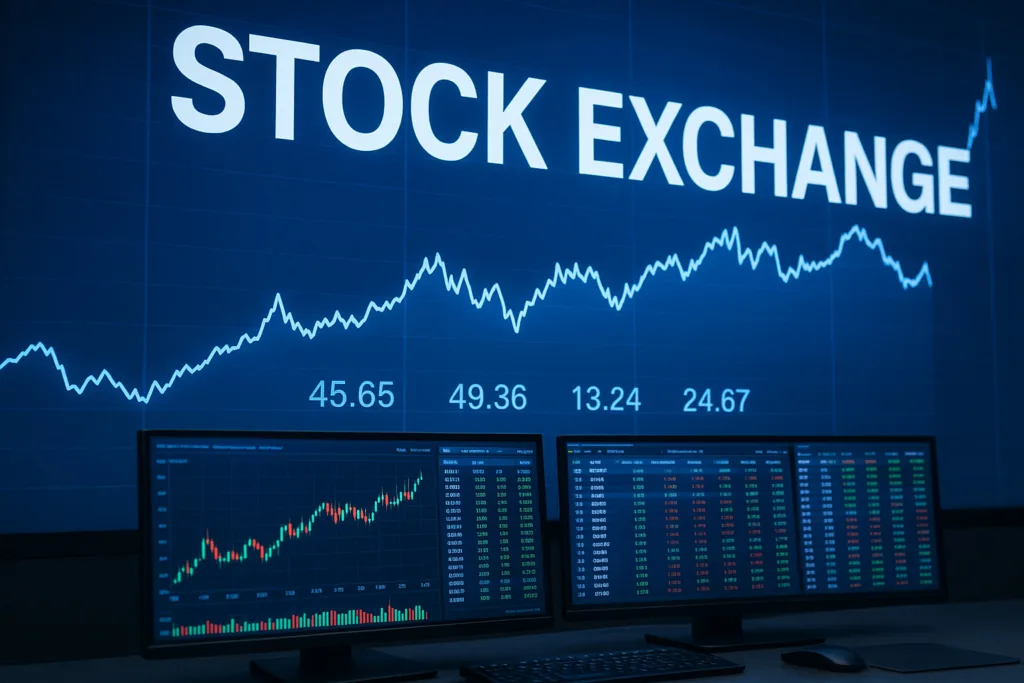
Cybersecurity has shifted from a niche IT expense to a critical line of defense for businesses, governments, and consumers alike. As cyberattacks continue to escalate in scale and sophistication, companies are investing billions in protecting their data, infrastructure, and customers.
This relentless demand has turned cybersecurity stocks into one of the most compelling growth stories in today’s market. For traders, these companies offer not just exposure to a booming industry, but also resilience — cybersecurity budgets rarely shrink, even during economic slowdowns.
The question now is whether this sector is poised to become the next big opportunity for active investors.
Why Cybersecurity Is Becoming a Market Hotspot
Cybersecurity is no longer optional — it’s mission-critical. With data breaches, ransomware attacks, and state-sponsored hacking on the rise, organizations of all sizes are being forced to rethink how they protect sensitive information. High-profile incidents affecting banks, energy grids, and even government agencies have made cybersecurity spending a top priority, regardless of broader economic conditions.
Unlike many areas of tech, cybersecurity budgets are considered non-discretionary. When companies cut costs during downturns, they might delay software upgrades or new hardware purchases — but they can’t risk being exposed to an attack. This resilience makes cybersecurity stocks attractive to investors looking for growth that can weather market volatility.
The sector is also being propelled by regulatory pressure. Governments worldwide are tightening rules around data privacy and breach reporting, requiring companies to invest more heavily in cyber defense. Add to this the rapid shift toward cloud computing, remote work, and AI-driven applications — all of which expand the attack surface — and the result is a sustained surge in demand for advanced security solutions.
For traders, this steady demand translates into a sector with both long-term growth potential and short-term trading opportunities. Earnings beats, high-profile contract wins, or emerging threat trends can all move cybersecurity stocks sharply. As digital threats evolve, so too does investor interest — positioning cybersecurity as one of the market’s most promising battlegrounds for capital.
Key Players and Emerging Innovators in Cybersecurity
The cybersecurity sector is packed with both established leaders and fast-growing disruptors, giving traders a mix of stability and high-upside potential.
Established leaders such as Palo Alto Networks, Fortinet, and Check Point Software dominate enterprise security with broad product portfolios. Their recurring revenue from subscription-based services provides reliable cash flow, which investors value during uncertain markets. These companies are also expanding into cloud security and AI-driven threat detection to maintain their competitive edge.
High-growth innovators like CrowdStrike, Zscaler, and SentinelOne are grabbing attention for their cloud-native approaches. CrowdStrike’s Falcon platform uses artificial intelligence to stop breaches before they spread, while Zscaler focuses on secure access for remote and hybrid workforces. These firms often trade at premium valuations because of their rapid revenue growth — a feature that attracts momentum traders but also adds volatility when earnings disappoint.
Smaller emerging players and niche specialists are another area to watch. Companies working on zero-trust security, quantum encryption, or next-gen identity verification could see outsized gains if they win key contracts or become acquisition targets. Larger tech companies, including Microsoft and Cisco, are also pushing deeper into cybersecurity sector through internal development and strategic buyouts, reshaping the competitive landscape.
For traders, the takeaway is clear: the sector offers both dependable performers and high-risk, high-reward names. Keeping an eye on product innovation, customer adoption, and M&A activity can help identify which cybersecurity stocks are likely to deliver the next breakout move.
How Cybersecurity Stocks Perform in Different Market Conditions
Cybersecurity stocks have earned a reputation as one of the few tech segments that can thrive in almost any economic climate. While many growth industries struggle during recessions or periods of market uncertainty, cybersecurity often proves to be more resilient.
During economic slowdowns, companies may delay IT upgrades or reduce marketing budgets, but they rarely cut cybersecurity sector spending. The risk of a major breach — and the regulatory fines, legal costs, and reputational damage that follow — is simply too great. This defensive quality helps support valuations even when other tech sectors face heavy selling pressure.
In bull markets, cybersecurity stocks benefit from a different dynamic: investors are willing to reward high-growth names with premium valuations. Companies that consistently deliver double-digit revenue growth, such as those offering cloud-native or AI-driven solutions, often see their stock prices rise faster than the broader market.
However, cybersecurity is not completely immune to volatility. Premium valuations mean that earnings misses or slower customer growth can trigger sharp corrections. Additionally, macroeconomic shifts — such as rising interest rates — can weigh on high-growth names more than on mature, cash-generating players.
For traders, understanding this pattern is key. Cybersecurity firms with strong cash flow may act as defensive anchors in turbulent markets, while smaller innovators provide offensive opportunities in bullish conditions. Blending both types of exposure can help balance risk and reward during different phases of the market cycle.
Metrics and Trends Traders Should Track
Success in trading cybersecurity stocks requires more than just knowing which companies are growing — it’s about tracking the right performance indicators and market trends that drive valuations.
1. Revenue growth and annual recurring revenue (ARR)
Since most cybersecurity firms rely on subscription-based models, steady ARR growth signals predictable cash flow and strong customer retention. Traders watch for companies consistently posting 20–40% revenue growth, as these names often command premium valuations.
2. Customer acquisition and large contracts
Wins with Fortune 500 clients or government agencies are major credibility boosts. A single large contract can move a stock sharply, as it suggests both trust in the company’s product and future revenue expansion.
3. Margins and operating efficiency
While growth is essential, analysts also look for improving gross margins and controlled spending. High-growth companies that show a path to profitability often see their stocks rewarded by investors seeking sustainable performance.
4. Innovation pipelines and product adoption
Whether it’s AI-driven threat detection, zero-trust frameworks, or cloud-native security tools, traders pay attention to how quickly customers adopt new solutions. Rapid adoption often foreshadows stronger revenue in future quarters.
5. Industry trends and regulatory shifts
Rising cyberattacks, stricter compliance requirements, or high-profile breaches can create tailwinds for the entire sector. These events frequently trigger short-term rallies as investors anticipate increased spending on security.
By combining company-specific data with broader market signals, traders can better anticipate which cybersecurity firms names are likely to outperform. Monitoring earnings calls, guidance updates, and sector news helps capture both long-term growth stories and near-term trading opportunities.



